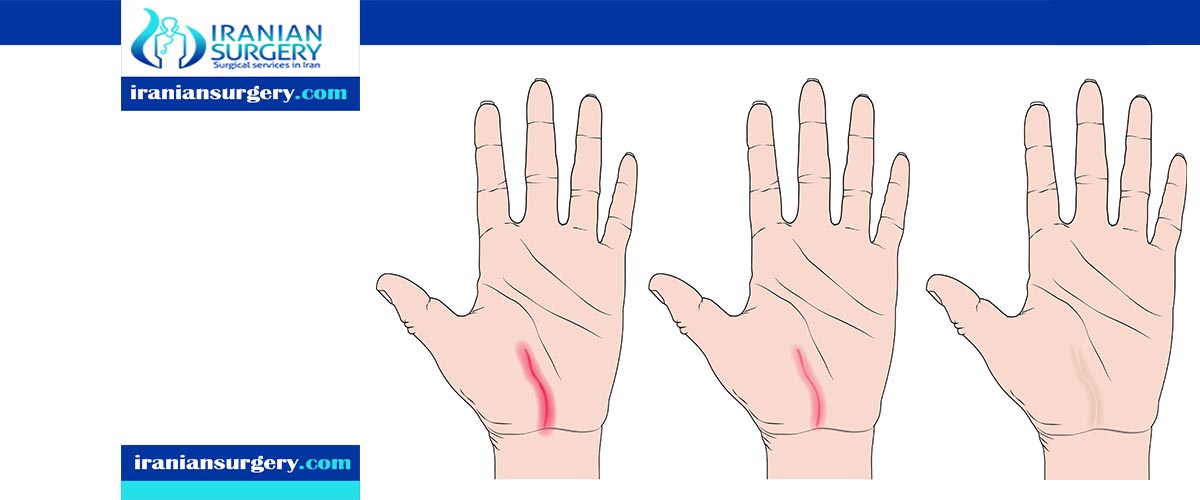Wrist Surgery Scar

Wrist Surgery Scar
After an injury or surgery, our bodies naturally make scar. Scar tissue can become a problem if it limits function and/or is unpleasant to look at. Scar tissue can be treated. A physical or occupational therapist who specializes in treating upper extremity injuries can help. There are several factors a therapist assesses to determine the best course of action for scar management. These factors may include the following:
- How close the scar is to a tendon or muscle: A scar may become adherent to the surrounding tissue such as tendons and/or muscles. As tissues heal, scar adhesion can make movement more difficult. Therapists prescribe specific and directed movements that can reduce adherent scarring.
- Shape of the scar: If your scar is from a surgery, it is usually a thin line. If scar is from an accident, it may be irregularly shaped and/or vary in depth which could make it unpleasant for you to look at.
- Type of scar: As skin heals, it shrinks slightly and can cause pain and interfere with motion. Hypertrophic scarring can occur causing scar tissue to form outside the normal borders of the wound. Keloid scarring can also occur which causes a large, raised scar.
- Sensitivity of the scar: Skin is used to being touched by different textures during the day such as clothes, jewelry, and resting surfaces. After an injury or surgery, the wound area is covered for a short amount of time to keep it clean and protected. During this time, the skin can become hypersensitive. This can be very painful, cause you to protect your scar during use, and may also affect your sleep.
How long does it take for a scar to flatten?
Scars continue to grow and change throughout the recovery process which may take from twelve to eighteen months. Scar massage is an effective way to decrease scar tissue build up and help make scars less noticeable. Massage will not help soften a scar more than two years old.
How do surgical scars heal?
Treatments include surgery to remove the scar, steroid injections, or silicone sheets to flatten the scar. Smaller keloids can be treated using cryotherapy (freezing therapy using liquid nitrogen). You can also prevent keloid formation by using pressure treatment or gel pads with silicone when you are injured
Can surgery scars disappear?
The scar won't disappear completely and you'll be left with a visible mark or line. Fine-line scars are common following a wound or after surgery. They aren't usually painful, but they may be itchy for a few months. On darker skin types, the scar tissue may fade to leave a brown or white mark.
How to treat a scar
If you have a scar that is causing pain or is limiting the use of your hand or arm, a hand therapist can help using the following treatments:
- Scar massage: Normal skin can be lifted and moved in all directions. Massaging the scar helps the scar move the same way as the normal surrounding skin. Using lotion helps as you massage your scar in circles, side to side, and up and down . This stretches the skin in all directions to reduce the tightness of the skin while it is healing. This also helps to decrease sensitivity of the skin and provides necessary moisture for healing.
- Scar pads and tape: Silicone pads offer compression and help to soften the skin resulting in a flat and less noticeable scar. A silicone pad is applied like a sticker to the skin. Your hand therapist can discuss wear (usually overnight). If your scar is irregularly shaped and/or deep, a silicone-based elastomer can be molded to your scar. Either silicone or elastomer scar pads can be held in place with a loose dressing.
- Desensitization: When the scar is hypersensitive it is important to introduce different textures to the skin to decrease sensitivity. Start with something soft you can tolerate like a pillow case. Rub the hypersensitive area for one to two minutes at a time. Work up to more abrasive textures like a washcloth several times per day.
10 common questions about Wrist Surgery Scar
[kkstarratings]


